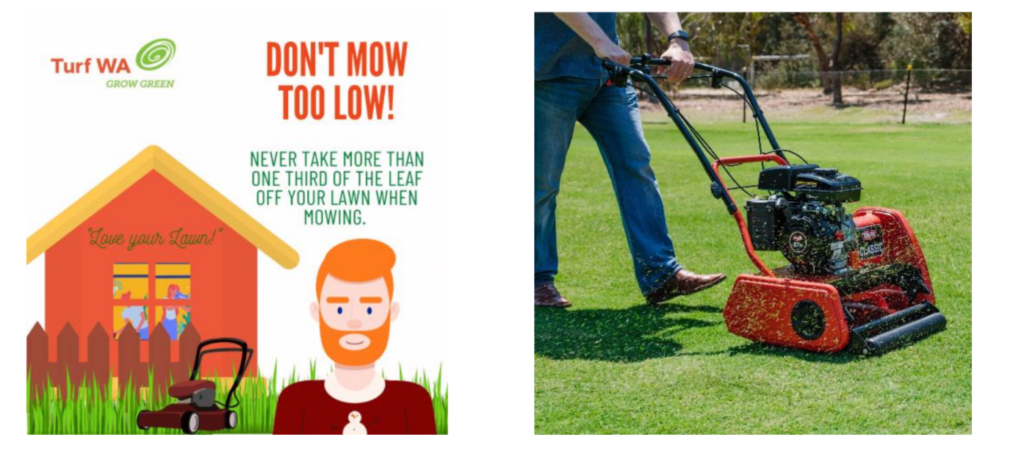Wetting Agents
March is often called the second summer! Temperatures can reach that of the peak of summer for a few days at a time. Generally though, nights are a bit cooler. So with daytime temperatures still quite high, the most important thing to do, is get a quality wetting agent and soil moisture retainer, such as Aquaforce and Biagra, down on to your lawns now.
Given that the majority of Perth and surrounds has sandy soils, the addition of premium quality soil wetting agents, allows for optimum water holding capacity in the soil profile, thus, allowing the roots of turf to be able to draw moisture from this pool of retained water. The application of a quality wetting agent, such as Aquaforce, and a soil moisture retainer, such as Biagra, is important at this time of the year.
In many cases across the Perth metropolitan area, soils are hydrophobic, (which means that they repel or fail to mix with water). This is due to a waxy build up on soil particles, (especially in grey sands), which in turn disallows water from penetrating the particles. The result is that the sub soil does not become wet even though there has been substantial rain. Wetting agents will aid in breaking down that waxy coating, and as a result will allow the soil to absorb, disperse and hold onto water more freely. A more even coverage of the water in your sub soils being the end optimum result.
Often if wetting agents are not applied on hydrophobic soils at the advent of the first rains, (after a long period of heat), garden plants and lawns will be forced tolerate further stress in their natural environment with surface water logging and topsoil compaction. This compaction inhibits the soils natural percolation process, and the plants begin to stress with the lack of available oxygen. The surface area of the leaf thins so the photosynthetic process of carbon dioxide intake to turn starch into sugar for energy and growth is diminished. In short, plants stress unnecessarily.
This circumstance also makes fertiliser applications wasteful as plants which are dormant are unable to absorb nutrient through the root system while minimal leaf surface area decreases the ability to absorb foliar fertilisers through the stomata in the leaf.
The home gardener needs to be aware that we have a sizable area of land affected by hydrophobic sands here in WA. In these areas, the soil simply will not soak up our first rains if wetting agents are not applied. Investing in and applying quality wetting agents now is just as important as it is in the hotter periods. Without the application of wetting agent, you risk the chance of further stressing you plants after a long, hot summer. A quality, wetting agent and soil moisture retainer combination pack doesn’t cost an arm or a leg and they usually cover quite a large area, they are a worthy investment for your lawn and garden.
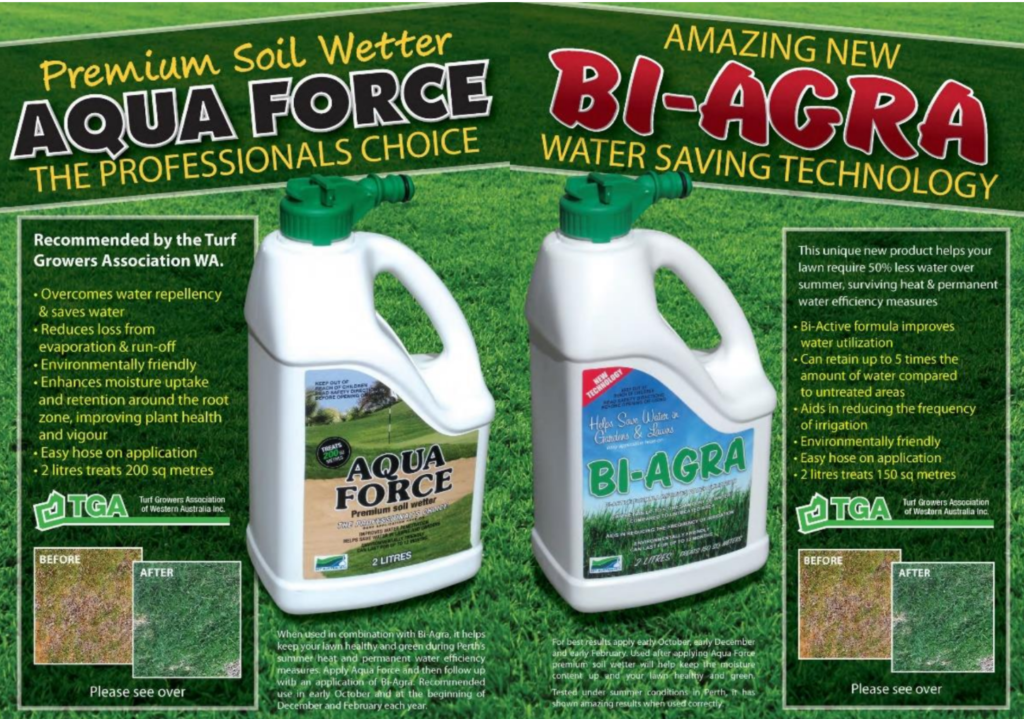
Fertilising
Fertilising now will help. Remember to use a slow-release fertiliser, that can provide sustained nutrients to your lawn without leaching away into the waterways. Something like an NPK based fertiliser which contains good levels of Nitrogen (N), Phosphorus (P), and Potassium (K) plus essential minerals and trace elements, to your lawn is perfect. As well there are slow-release organic fertilisers that contain humate and carbon that really assist with soil health and plant uptake of essential nutrients. Applying a combination of the two is an excellent choice.
A year round fertliser program really is vital for your lawn’s health. The Turf Growers Association WA members, recommend at least four applications of fertiliser a year, (at the beginning of each season), however optimum outcome will be achieved by feeding your lawn every two months in the warmer months. Fertilisers should be applied when your lawn is actively growing.
As a rule, slow-release fertilisers should be spread at a rate of no more than 2kg (a standard 2 litre ice cream container) per 100m² per application.
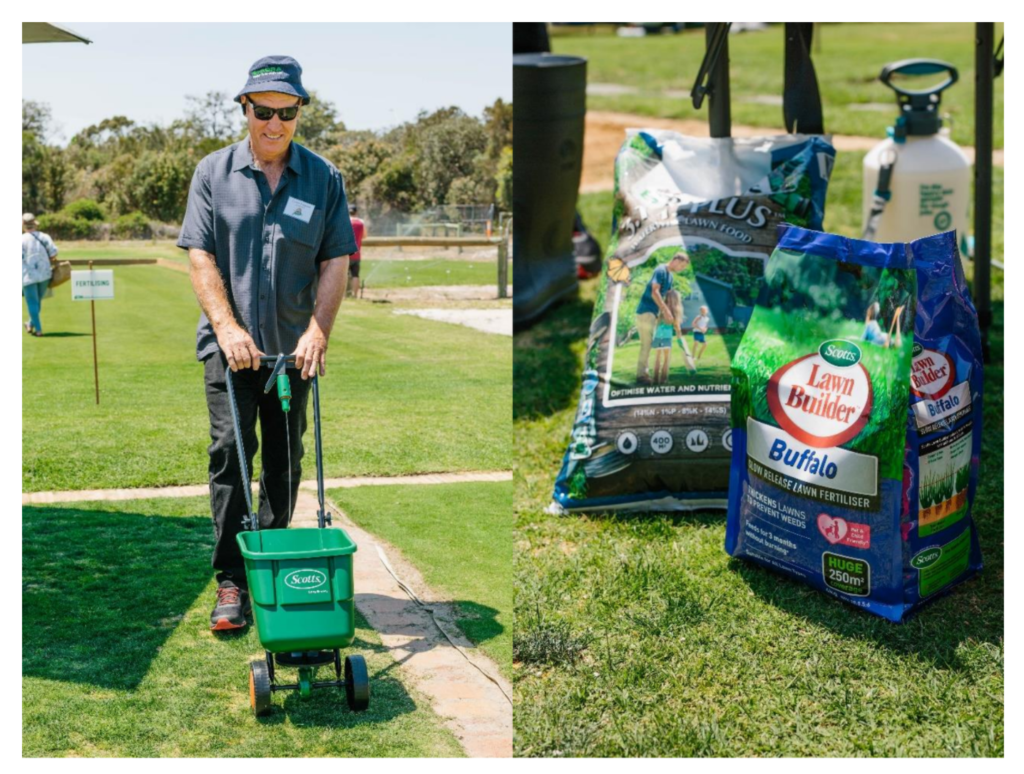
Soil compaction
Soil compaction is an often-unrecognized issue. Compaction and soil hydrophobicity (anti wetting), regularly go hand in hand, often causing dry patches or dead areas of lawn. Soil compaction inhibits the soils natural percolation process resulting in lawns and plants becoming quickly stressed with the lack of available oxygen.
With the wear and tear on lawns over hotter months, soil tends to solidify, diminishing the quantity of oxygen within. Lack of oxygen essentially suffocates the root system of lawns. Compaction should be addressed by circulating air through the soil under your turf. To achieve this you can use a spiked roller, a pitchfork, or even spiked shoes to break up the soil. You might also wish to consider the use of gypsum, if you have a clay-based soil, as this will assist in separating your soil, loosening any clay that might be in the subsoil.
On the off chance that you haven’t checked your soil’s pH levels for some time, Autumn is an appropriate time to do so. Out of balance pH levels will not only diminish your lawn’s health and how it looks, it will also reduce the impact of fertilizing your lawns. The ideal lawn pH level is 6.5, which is somewhat acidic.
To correct a low soil pH, especially in clay-based areas such as the foothills and upwards in the ranges, use Dolomite Lime. Dolomite Lime has the added benefits of Calcium and Magnesium which increase your lawn’s ability to take up the other macronutrients it needs. In sandy soils, correcting high soil pH can be done using Sulphate of Ammonia, which will work to neutralise alkaline soils which are particularly prevalent on coastal plains where grey sands prevail.
Winter Grass Weeds
If you have problems with Wintergrass each winter and spring, you can apply an unscheduled Wintergrass pre-emergent such as Barricade. Pre-emergent’s are sprays that can be applied to lawns and gardens BEFORE weeds appear. They have an herbicide component which is designed to kill annual weeds, such as winter grass before they appear. If you choose to use a pre emergent, you will usually apply the first application in the middle of March each year. St Patrick’s Day is a great day to mark on the calendar as a reminder! It is around this time that night temperatures drop, and weeds such as winter grass start to appear. Unfortunately pre emergent sprays will not work on weeds that have started to germinate, nor will they kill weeds already developed. In the home yard, if these weeds are establishing now, your best bet is to hand weed them out, before they grow to a stage that will affect your lawn. Turf Growers Association members do not encourage the use of scheduled herbicides in home gardens, if you choose to apply a pre-emergent, we urge homeowners to try an herbicide that is unscheduled, meaning that it is safe and not poisonous. Unscheduled sprays will have little impact on the soil microbiology so as not to impact on the ecosystems under your lawn.
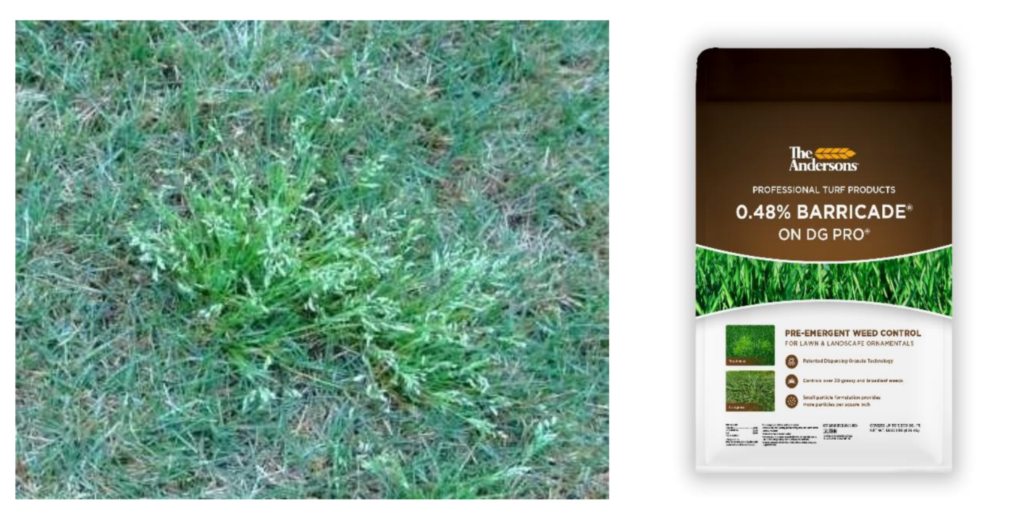
Fungal Disease
The beginning of Autumn is also the time to look out for fungal diseases which can cause problems as temperatures change. The emergence of fungal disease in your lawn is usually a sign of stress, whether it be from extremes of temperature and moisture, night watering, poor nutrition, scalping and soil compaction. It’s not common to have fungal disease in home lawns, neither is it unheard of. If you think that you have a fungal issue, it might be best to contact a lawn consultant, such as our allied member, the Lawncare Man, as they can identify, and are licenced to spray for, fungal diseases. https://www.lawncareman.com.au/
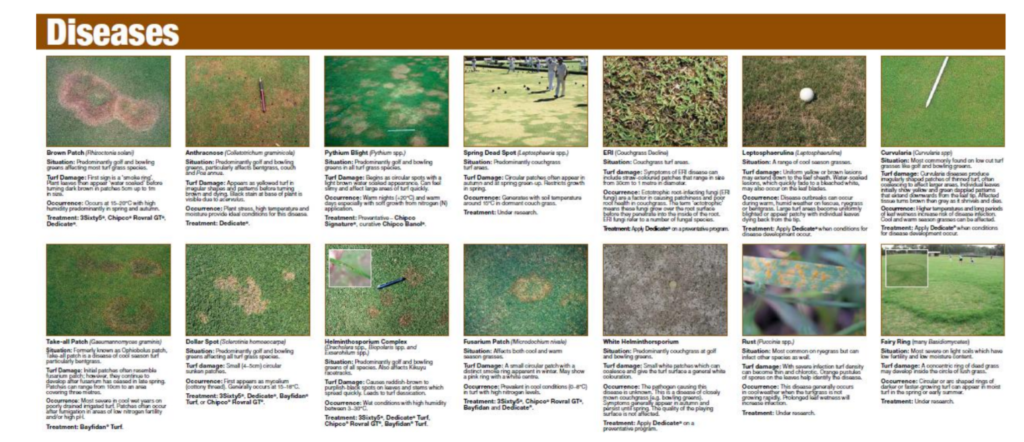
LAWN GRUBS – Keep an eye out for lawn grubs, such as Army worm and Cut worm and treat immediately if located. They love the humid weather and move quickly during this time. The first sign will be larger patches of dead or dying lawn. If this occurs, look out for, small, white butterflies flying low, above your lawn in the evenings. You can also tip a bucket of warm soapy water over a healthy patch to the side of the already damaged turf to see what sort of grubs/caterpillars come up. If you find evidence of these destructive critters, you can apply a granulated lawn grub killer. This usually sorts the problem out quick smart.
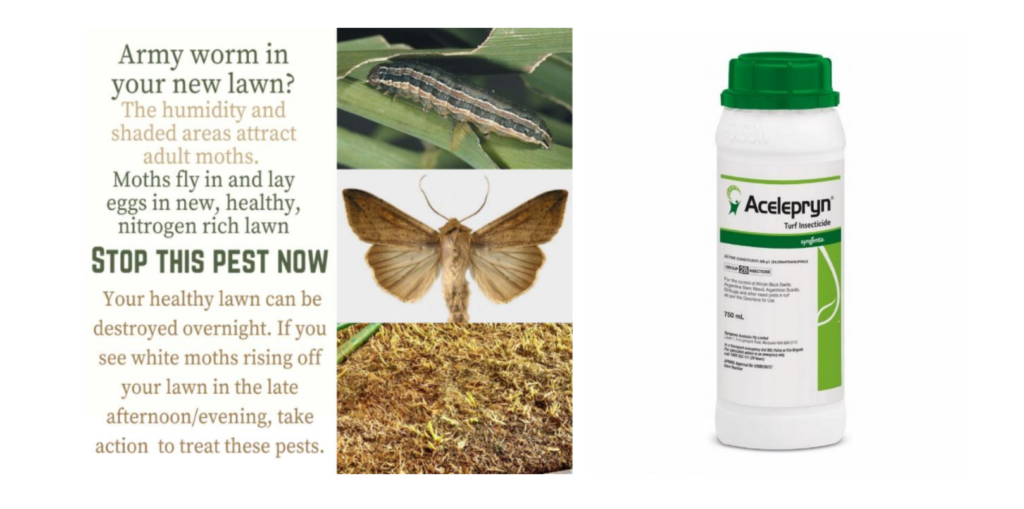
SMART IRRIGATION – Adjust irrigation run times as necessary. As nights get cooler and days too start to cool down towards the end of the month, it’s well worth adjusting your irrigation controller, to irrigate that bit less. This will save water for when you need it most, in the hottest months. Even better if you can afford it, invest in a smart irrigation controller, such as the Hunter Hydrawise Controller. Our allied member Hunter Industries, supply these units across a variety of outlets in WA, at very reasonable pricing. For a few hundred dollars, this great controller manages your scheduling year-round, without you having to do anything. They are a set and forget unit, that result in up to 50% water savings.
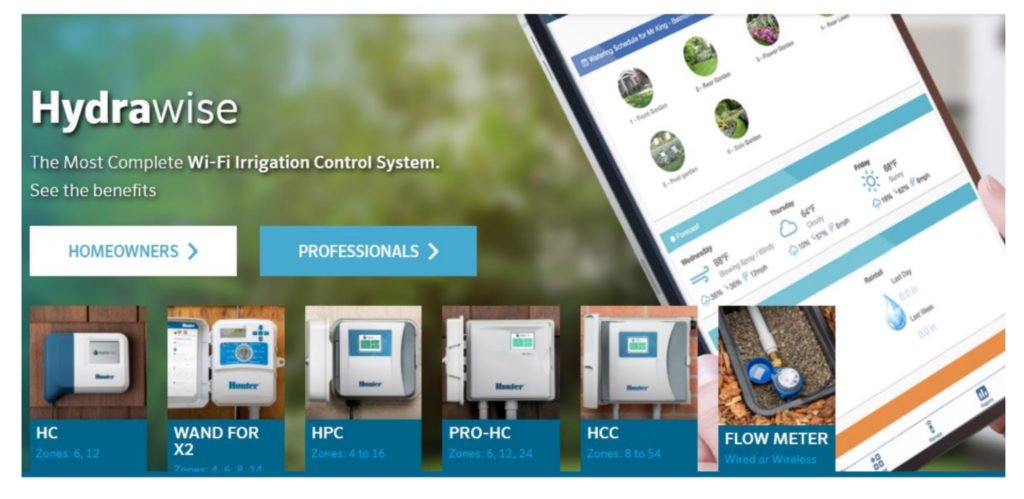
Mowing Your Lawn
Mow weekly at 15 – 20 mm height in March. DON’T MOW TOO LOW! You ought to be leaving at least a third of the leaf at each mow. This will offer a superior leaf surface zone for your lawns for photosynthesis, allowing the grass to create essential sugars which are key for its general wellbeing.
Seriously, never take more than a third of the leaf off your lawn! This is really important in hot months. The only exception to this recommended mowing height, is if you wish to renovate your lawn in Spring by hard mowing or Vertimowing. Definitely avoid scalping your lawn at this time of the year, it’s simply not a good idea.
